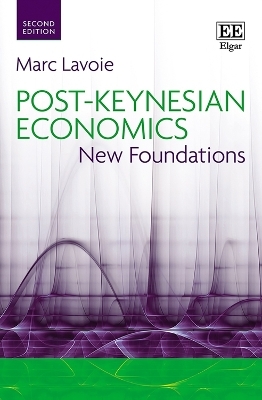
Exchange Rate Economics
Where Do We Stand?
Seiten
2005
MIT Press (Verlag)
978-0-262-04222-2 (ISBN)
MIT Press (Verlag)
978-0-262-04222-2 (ISBN)
- Keine Verlagsinformationen verfügbar
- Artikel merken
Discussions of the different theoretical and empirical paradigms for setting and predicting exchange rates.
Recent theoretical developments in exchange rate economics have led to important new insights into the functioning of the foreign exchange market. The simple models of the 1970s, which could not withstand empirical evaluation, have been succeeded by more complex models that draw on theoretical work in such areas as the microstructure of financial markets and open economy macroeconomics. Additionally, new and powerful econometric techniques allow researchers to subject exchange rates to stronger empirical analysis.This book discusses the divergent theoretical and empirical paradigms used today for setting and predicting exchange rates; the chapters reflect current debates in the field. Some chapters base their analyses on the theoretical framework of representative and fully informed rational agents; others are grounded in the hetereogeneity of agents who use different and incomplete sets of information. Still other chapters analyze empirical data to uncover the fundamental characteristics of exchange rates.
Taken together, these competing analyses document the current state of exchange rate economics and point the way to a new consensus about how to predict and explain exchange rate movements.
Recent theoretical developments in exchange rate economics have led to important new insights into the functioning of the foreign exchange market. The simple models of the 1970s, which could not withstand empirical evaluation, have been succeeded by more complex models that draw on theoretical work in such areas as the microstructure of financial markets and open economy macroeconomics. Additionally, new and powerful econometric techniques allow researchers to subject exchange rates to stronger empirical analysis.This book discusses the divergent theoretical and empirical paradigms used today for setting and predicting exchange rates; the chapters reflect current debates in the field. Some chapters base their analyses on the theoretical framework of representative and fully informed rational agents; others are grounded in the hetereogeneity of agents who use different and incomplete sets of information. Still other chapters analyze empirical data to uncover the fundamental characteristics of exchange rates.
Taken together, these competing analyses document the current state of exchange rate economics and point the way to a new consensus about how to predict and explain exchange rate movements.
Paul De Grauwe is Professor of Economics at the Catholic University of Leuven, the author of The Economics of Monetary Union, and the editor of three previous books in the CESifo Seminar series.
| Erscheint lt. Verlag | 8.2.2005 |
|---|---|
| Reihe/Serie | CESifo Seminar Series |
| Zusatzinfo | 54 illus. |
| Verlagsort | Cambridge, Mass. |
| Sprache | englisch |
| Maße | 152 x 229 mm |
| Gewicht | 635 g |
| Themenwelt | Wirtschaft ► Volkswirtschaftslehre ► Finanzwissenschaft |
| ISBN-10 | 0-262-04222-3 / 0262042223 |
| ISBN-13 | 978-0-262-04222-2 / 9780262042222 |
| Zustand | Neuware |
| Haben Sie eine Frage zum Produkt? |
Mehr entdecken
aus dem Bereich
aus dem Bereich
eine Einführung in die Staatsfinanzen
Buch | Hardcover (2024)
Vahlen (Verlag)
39,80 €
New Foundations
Buch | Softcover (2022)
Edward Elgar Publishing Ltd (Verlag)
64,75 €
and why it doesn't work the way we think it does
Buch | Softcover (2023)
Pan Books (Verlag)
13,70 €


